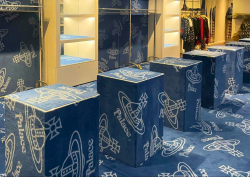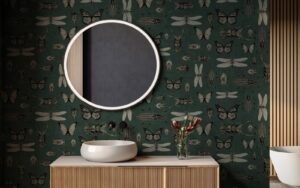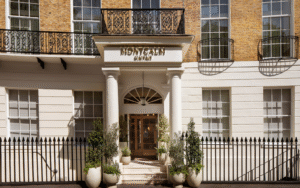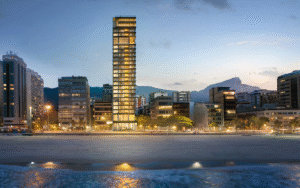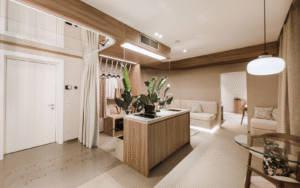With hotels typically refreshing their interiors every three to seven years – and sustainability now a business imperative rather than a buzzword – the future of hotel design lies not in constant replacement, but in thoughtful reinvention…

Walk into any well-appointed hotel, and you’ll likely notice the refined touches: the warm gleam of a woodgrain headboard, the cool elegance of a marble-topped side table, or the sophisticated sheen of brushed metal accents at the front desk. What you might not notice is that many of these seemingly high-end surfaces didn’t arrive with a hefty price tag or carbon footprint. Instead, they’re the result of a smarter, more sustainable design approach – upcycling with Architextural‘s architectural films.
The case for upcycling in hospitality
Hotel furniture takes a beating. Whether it’s the constant flow of guests, frequent cleaning, or shifting design trends, furnishings can show their age quickly. Traditionally, the solution was simple (and expensive): replace and refresh. But in an era of rising costs, supply chain delays, and the growing awareness of environmental impact, that approach is starting to feel outdated.
Enter Architextural and its architectural films – a versatile, design-forward material that’s allowing hotels to transform existing furniture with minimal disruption and maximum visual payoff. Self-adhesive and durable, these films come in an array of textures and finishes, from rich walnut and sleek leather to marble, metal, and even stone. The result? A stylish upgrade that feels like a full renovation, without the waste or wait.
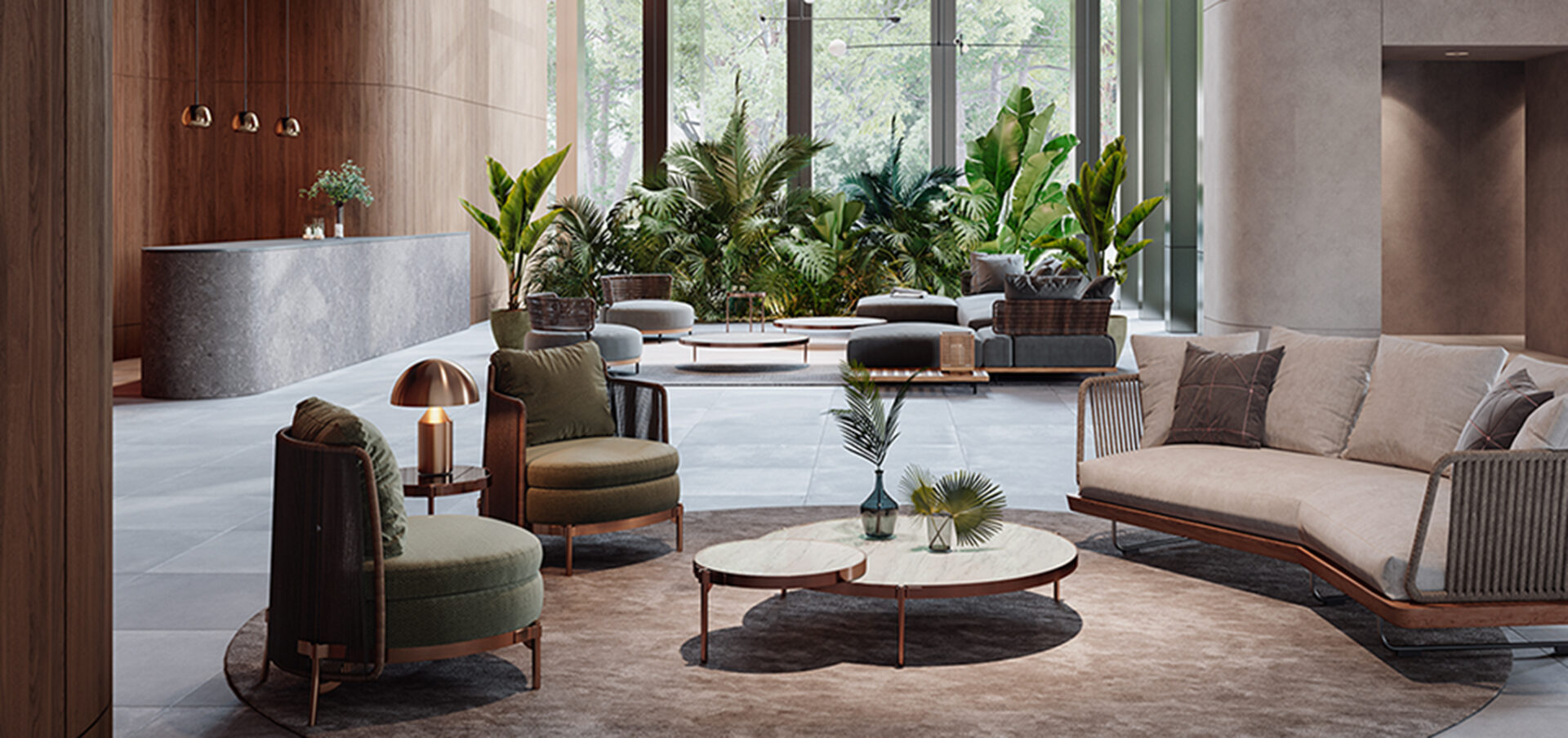
Image credit: Architextural
Design meets sustainability
Upcycling isn’t just a trend; it’s becoming a necessity. The hospitality industry is under increasing pressure to reduce its environmental footprint. Disposing of old furniture not only fills landfills – it burns through budgets. By resurfacing rather than replacing, hotels can:
-
Reduce waste: keep perfectly functional furniture in service while dramatically updating its look.
-
Cut costs: architectural films cost a fraction of new furnishings, and installation is often quick and non-disruptive.
-
Stay operational: with minimal downtime, there’s no need to shut down rooms or public spaces for days or weeks on end.
And these aren’t compromises. Today’s architectural films are engineered to look and feel like the real deal. Many of Architextural’s products boast added features like anti-microbial coatings, scratch resistance, and easy-clean surfaces – ideal for high-touch hospitality environments.
High-end without the hassle
What sets architectural films apart isn’t just their sustainability – it’s the design freedom they offer. Want to give a standard MDF nightstand the look of hand-carved oak? Or update a plain headboard with the visual punch of leather panels? With hundreds of finishes to choose from, films make it possible to dial in exactly the vibe you’re after, from boutique boho to minimalist luxe.
For hotels chasing a cohesive brand aesthetic, this means more control, faster updates, and fewer compromises. Entire spaces can be refreshed in days, not months – whether it’s a lobby that needs a lift, or an entire floor of suites calling for a refresh.
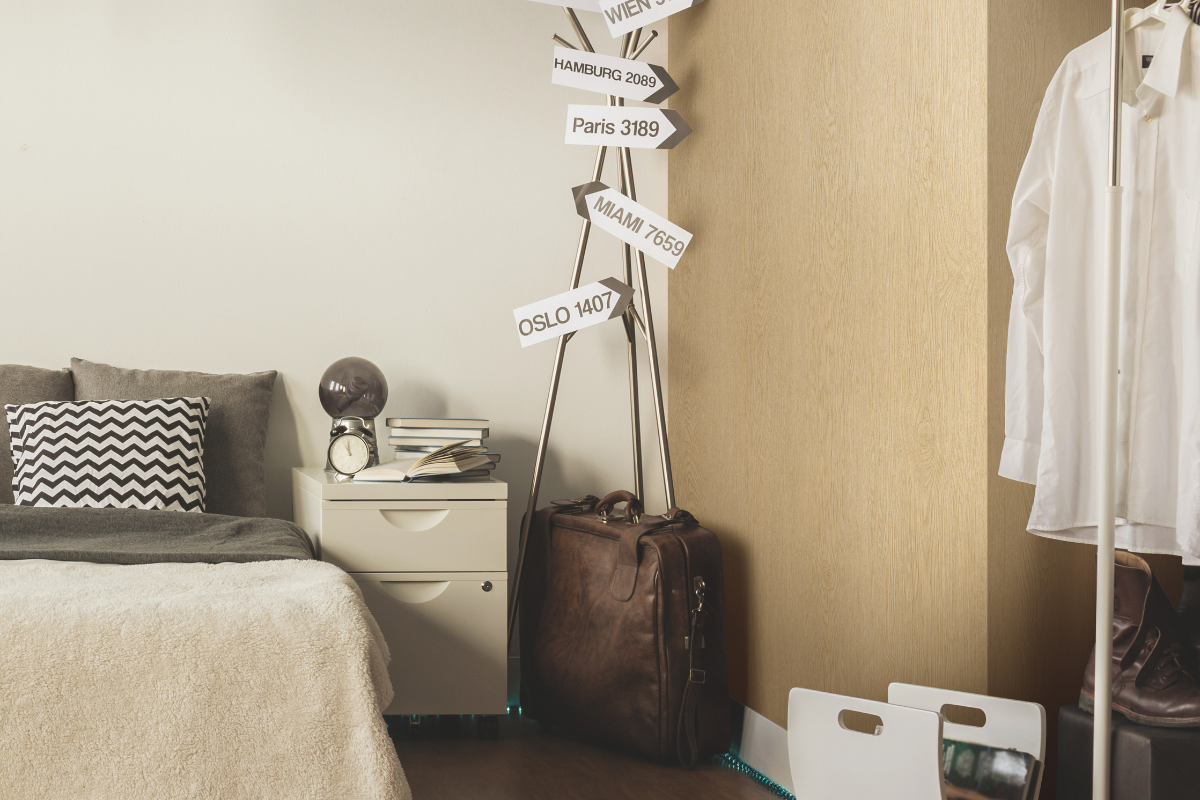
Image credit: Architextural
The future is here
Savvy hotel owners and designers are quickly catching on: upcycling isn’t just a stopgap – it’s a long-term strategy. It’s a way to remain agile in a rapidly evolving industry, where guest expectations keep climbing, and margins keep shrinking.
By it’s the design freedom, the hospitality sector can tap into a powerful intersection of design innovation, cost-effectiveness, and environmental responsibility. Because sometimes, luxury isn’t about what’s new – it’s about what’s newly imagined.
Architextural is one of our Recommended Suppliers and regularly features in our Supplier News section of the website. If you are interested in becoming one of our Recommended Suppliers, please email Katy Phillips.
Main image credit: Architextural








